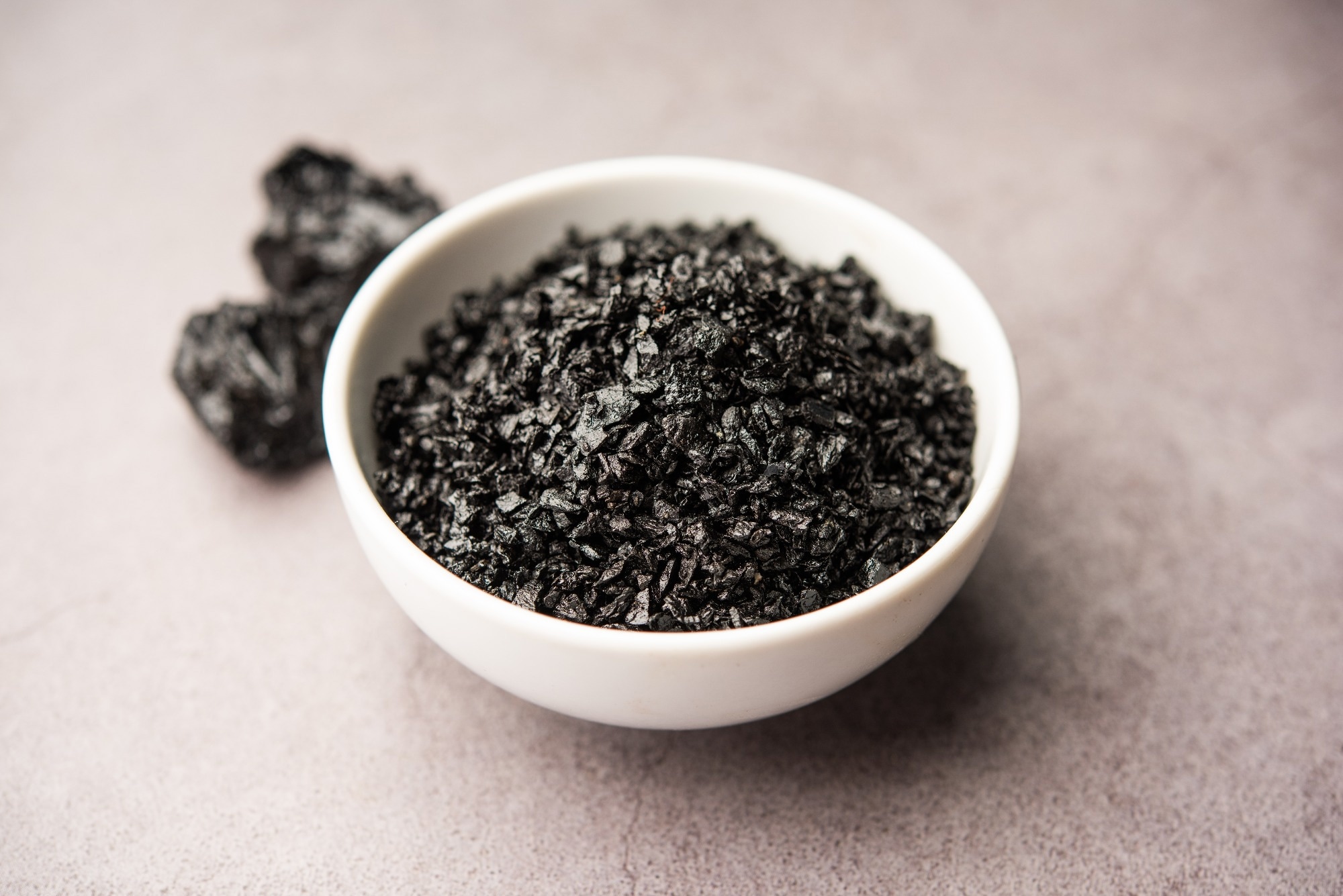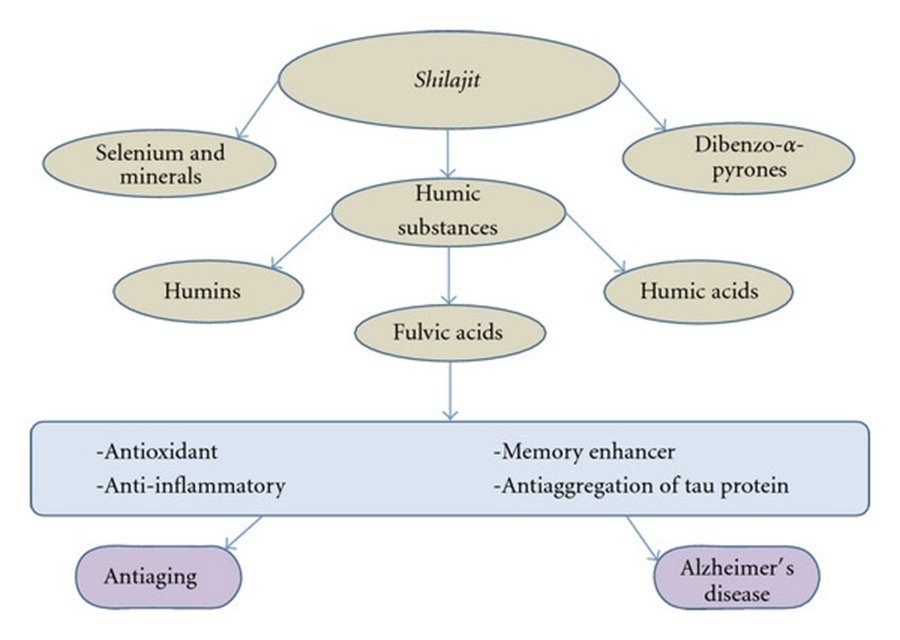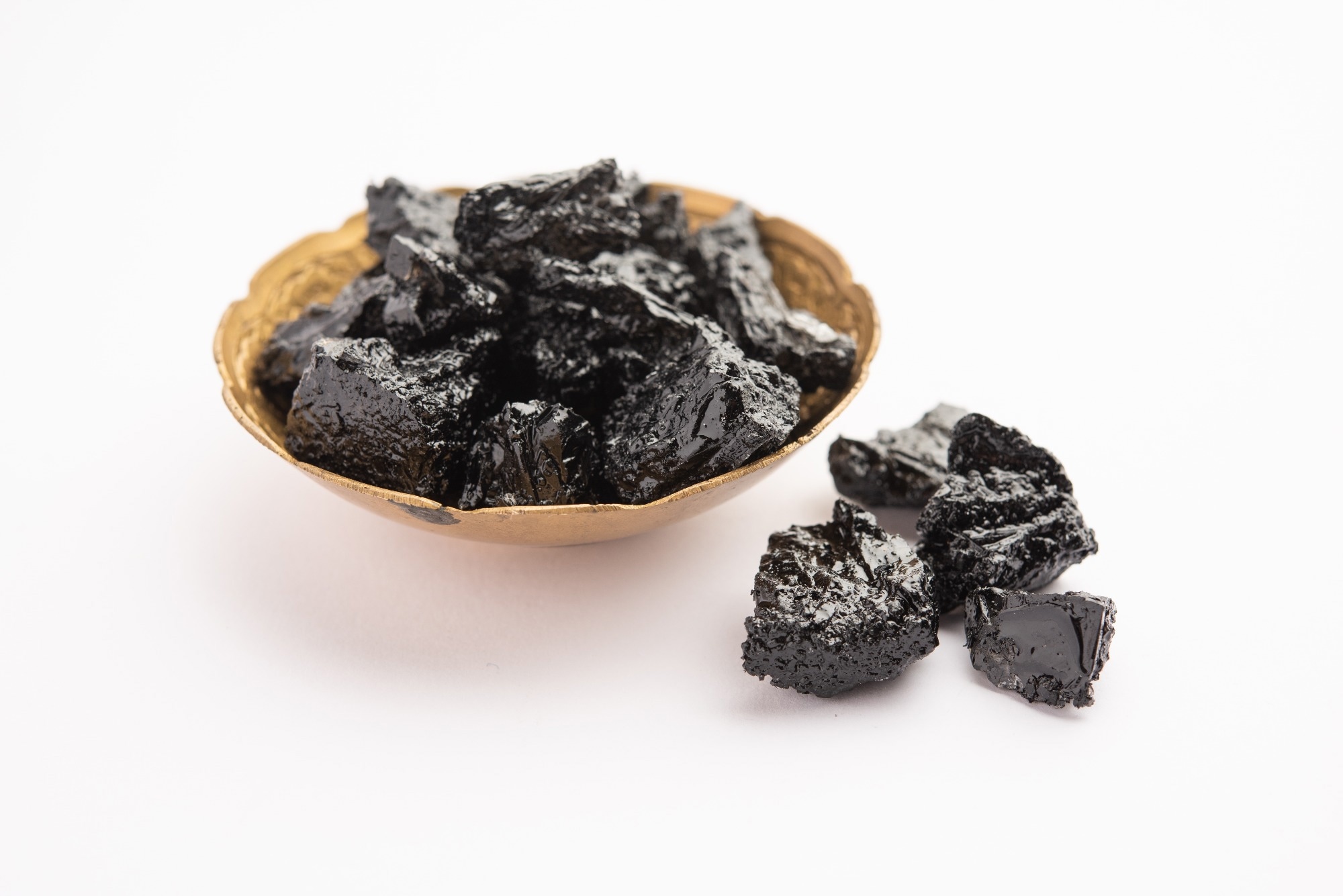Introduction
What is Shilajit?
Claimed Health Benefits
What Does the Science Say?
Safety and Side Effects
Market Trends
Conclusions
References
Further Reading
Shilajit, a traditional Ayurvedic remedy, is gaining global attention for its potential antioxidant, neuroprotective, and adaptogenic properties, primarily due to its fulvic acid content. While preliminary studies are promising, robust clinical trials are still needed to confirm its safety and efficacy in diverse populations.
 Image Credit: StockImageFactory.com / Shutterstock.com
Image Credit: StockImageFactory.com / Shutterstock.com
Introduction
Shilajit has gained increasing popularity in both traditional and modern medicine due to its diverse therapeutic potential. Revered for centuries in Ayurvedic texts, Shailajit is often described as a powerful rejuvenator and adaptogen that supports overall vitality and resilience.
Shilajit is currently being explored for its potential applications in neurological health, metabolic support, and anti-aging interventions. Despite its ancient roots, Shilajit continues to be the subject of contemporary investigation, bridging the gap between natural remedies and biomedical innovation.1

Shilajit, its main components, and potential uses based on the properties of fulvic acid. This phytocomplex, known as shilajit, is mainly composed of humic substances. One of them, fulvic acid, is known for its properties, including antioxidant, anti-inflammatory, and memory-enhancing effects. Novel investigations suggest that fulvic acid acts as an antiaggregation factor for tau protein in vitro, indicating that it may be a potential anti-Alzheimer’s disease molecule.
What is Shilajit?
Shilajit is a sticky, tar-like exudate that leaks out from cracks in high-altitude rocks during the summer, particularly in the Himalayas, due to intense heat. Shliajit can range in color from pale to blackish brown and emit a smell similar to stale cow's urine.
Known as “Shilajatu” in classical Ayurvedic texts, the Sanskrit term “Shilajit” translates to “conqueror of mountains and destroyer of weakness.” Shliajit arises following the slow decomposition of plant material, such as Euphorbia royleana and Trifolium repens, under high pressure and temperature. This process, aided by microbial activity, yields a phytocomplex rich in humic substances, particularly fulvic acid, which accounts for 60-80% of its bioactive mass.1,2
The most therapeutically used variant is Lauha Shilajit, which is rich in iron. The primary chemical components of Shilajit include fulvic acid, humic acid, dibenzo-α-pyrones, minerals, amino acids, fatty acids, polyphenols, and triterpenes.1,2
Risking Death in the Name of 'Natural Viagra' | Risky Business | Business Insider
Claimed Health Benefits
Reported health benefits of Shilajit include increased energy and stamina, improved cognitive function, enhanced testosterone levels, anti-aging effects, and support for immunity and detoxification. These claims are primarily based on centuries of Ayurvedic use and anecdotal evidence; however, scientific validation remains limited.1,3
Modern scientific studies support some antioxidant, anti-inflammatory, and neuroprotective activities associated with Shilajit, most of which are attributed to fulvic acid. Shilajit may also aid cognitive function, especially in conditions like Alzheimer’s disease, by preventing tau protein aggregation.1,3
Although preclinical studies have reported the anti-diabetic, spermatogenic, and immunomodulatory effects of Shilajit, additional large-scale and controlled human trials are needed to establish its efficacy. In some isolated cases, adverse events like pulmonary embolism linked to certain supplement components have been reported, thus emphasizing the importance of additional research on Shilajit.1,3
Traditional and emerging scientific data suggest that Shilajit may offer multiple health benefits. Importantly, these claims are not universally supported by clinical data, with most benefits speculative or based on small-scale studies. Consumers should exercise caution, especially with unregulated supplements, and consult healthcare providers before their use.1,3
What Does the Science Say?
Small-scale clinical trials and laboratory studies have reported a wide range of potential benefits associated with Shilajit. Fulvic acid, a key bioactive compound present in Shilajit, exhibits strong antioxidant properties and the ability to enhance nutrient transport and mineral absorption, with some in vitro and in vivo studies indicating anti-inflammatory, anti-diabetic, and neuroprotective effects.1
Most studies investigating the therapeutic potential of Shilajit have been conducted using preclinical models, whereas the few available human studies often involve small sample sizes without rigorous controls. The lack of large-scale randomized controlled trials also limits the ability to establish the safety and efficacy across diverse populations. Variations in Shilajit sourcing and composition make standardization difficult, which further complicates reproducibility and regulatory approval.1
Preliminary studies suggest Shilajit holds therapeutic promise, especially as an adaptogen and metabolic booster; however, accurate clinical research is still required. Until then, health claims should be approached with caution, and Shilajit should be used as a complementary, rather than primary, treatment.
Safety and Side Effects
Shilajit is generally considered safe; however, potential contamination with heavy metals and mycotoxins, especially in unprocessed or counterfeit products, remains a concern. For example, the United States Food and Drug Administration (FDA) does not regulate dietary supplements as strictly as pharmaceuticals, which leads to variations in quality control and safety profiles across brands. Additionally, Shilajit may interact with medications, including antidiabetic, antihypertensive, and hormone-modulating drugs, due to its possible impact on testosterone and other hormone levels.3,4
Processed Shilajit, when administered within the range of 100-2,000 mg/day, does not cause significant toxicity in terms of liver, kidney, or blood function. However, hormonal effects such as increased testosterone and follicle-stimulating hormone levels have been observed, thus indicating that individuals with hormone-sensitive conditions may experience adverse effects when taking Shilajit. Experts also warn that exaggerated marketing claims often lack solid clinical support and that certain ingredients in “testosterone booster” products that may suppress, rather than enhance, testosterone.3,4
Experts recommend consulting a healthcare provider before using Shilajit, particularly due to potential interactions and the variability in product quality. Standardized, purified formulations should be chosen to minimize risks.
 Image Credit: StockImageFactory.com / Shutterstock.com
Image Credit: StockImageFactory.com / Shutterstock.com
Market Trends
The market for Shilajit has experienced significant growth over the past several years, which has largely been attributed to rising consumer interest in natural wellness products. Social media platforms and wellness influencers have also popularized Shilajit, often promoting this product for its potential benefits like increased energy, stamina, and cognitive function. This online exposure has expanded its reach beyond traditional users of Ayurvedic medicine to a global health-conscious audience.1,5
Shilajit is available in various supplement forms, including powders, capsules, and purified resin. Each form caters to different consumer preferences, with capsules considered convenient, whereas powders can be easily mixed with drinks. Resin, which is considered the purest form of Shilajit, is typically more expensive than other forms of Shilajit.1,5
Pricing and availability vary based on the source and level of purification. For example, high-quality Shilajit, especially that sourced from the Himalayas or Altai mountains, that is free of heavy metal contaminants, is more likely to be expensive. However, the lack of strict regulatory standards can make it difficult for consumers to determine the purity and authenticity of products.
As demand grows, the market for Shilajit continues to spread, as do concerns about quality control and misleading claims. These buyers are encouraged to choose reputable brands and verify third-party testing.1,5
Conclusions
Individuals with health conditions, those on medication, as well as pregnant and breastfeeding women, should be cautious and consult healthcare providers before using Shilajit. Variability in quality and potential contamination further underscore the need for careful selection. Ongoing clinical trials and research are expected to clarify the efficacy and safety of Shilajit, thereby providing better guidance for its future use in integrative health practices.
References
- Carrasco-Gallardo, C., Guzmán, L., & Maccioni, R. B. (2012). Shilajit: a natural phytocomplex with potential procognitive activity. International Journal of Alzheimer’s disease, 2012(1), 674142. DOI:10.1155/2012/674142, https://onlinelibrary.wiley.com/doi/10.1155/2012/674142
- Pandey, P. S. (2019). Shilajit-a wonder drug of ayurveda: an overview. Int J Pharm Sci Rev Res, 59(1), 140-143. https://www.wjpmr.com/home/article_abstract/4126
- Clemesha, C. G., Thaker, H., & Samplaski, M. K. (2020). ‘Testosterone boosting’supplements composition and claims are not supported by the academic literature. The World Journal of Men's Health, 38(1), 115-122.DOI:10.5534/wjmh.190043, https://www.wjmh.org/DOIx.php?id=10.5534/wjmh.190043
- Stohs, S. J. (2014). Safety and efficacy of shilajit (mumie, moomiyo). Phytotherapy research, 28(4), 475-479. DOI:10.1002/ptr.5018, https://onlinelibrary.wiley.com/doi/abs/10.1002/ptr.5018
- Kamgar, E., Kaykhaii, M., & Zembrzuska, J. (2025). A comprehensive review on Shilajit: what we know about its chemical composition. Critical Reviews in Analytical Chemistry, 55(3), 461-473. DOI:10.1080/10408347.2023.2293963, https://www.tandfonline.com/doi/abs/10.1080/10408347.2023.2293963
Further Reading
Last Updated: Jul 1, 2025